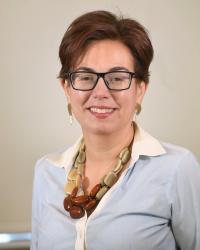
Drug Treatment Among Women Increases with Access to Social Safety Net Programs
Medicaid and complementary services like childcare and employment support linked to higher treatment rates
Women with drug use disorder (DUD) and opioid use disorder (OUD) are more likely to receive treatment when enrolled in Medicaid alongside other government assistance programs such as childcare, employment services, and SNAP benefits. According to a new study by researchers from Columbia University Mailman School of Public Health, these combined social safety net supports are significantly associated with increased receipt of drug treatment and medication for opioid use disorder (MOUD).
Published in the American Journal of Preventive Medicine, the study sheds light on how overlapping safety net services can help address longstanding treatment gaps among women with substance use disorders—a topic that has remained underexplored until now.
“Medicaid, in particular, continues to play a critical role in facilitating access to drug treatment among women,” said Silvia Martins, MD, PhD, professor of Epidemiology and senior author. “But our findings also highlight how complementary services—such as childcare and employment support—can reduce structural barriers to care like lack of insurance, caregiving responsibilities, and financial instability.”
Key findings include:
- Among women with past-year OUD, those receiving both Medicaid and other forms of government assistance were significantly more likely to report MOUD receipt compared to those receiving neither.
- Fewer than one in six women with DUD reported receiving any past-year drug treatment.
Researchers analyzed data from the 2022 National Survey on Drug Use and Health (NSDUH), using responses collected from 2,784 women aged 18–64 who met criteria for past-year DSM-5 DUD and 458 women who met criteria for OUD. The analysis, completed in 2024, estimated the odds of treatment receipt based on whether participants had Medicaid, government assistance, or both. Additional stratification included the number and type of assistance programs received.
The analysis controlled for sociodemographic factors, including age, race/ethnicity, education level, employment status, marital status, and number of children. Although this was not specifically studied in the current paper, fewer than 1 in 5 or 14 percent of women with OUD received MOUD compared to 23 percent of men, revealing a persistent gender gap in treatment access.
The study found that even in the absence of Medicaid, receipt of any government assistance was linked to significantly higher odds of treatment. “While drug treatment rates are improving among women who receive benefits, a substantial unmet need remains,” Martins noted.
The researchers emphasized the importance of policies that integrate treatment referrals with access to essential support services. “Our findings suggest that targeted interventions that include direct treatment linked to support services like housing, transportation, vocational training, and childcare, and that go beyond health insurance alone, could significantly increase treatment uptake and overcome structural barriers that disproportionately affect women —a possibility that should be directly tested in future research.”
Co-authors are Sam D. Gardner (first author), Columbia Mailman School and Columbia Social Work; Shota Hasui, Emilie Bruzelius, Megan E. Marziali, Nicole Fitzgerald, and Pia M. Mauro, Columbia Mailman School; Sarah Gutkind, Columbia Mailman School and Weill Cornell Medicine; and Morgan M. Philbin, University of California, San Francisco School of Medicine.
The study was supported by the National Institute on Drug Abuse (grants DA059376, DA031099, DA061635, DA045224, DA055606) and by the NIH HEAL Initiative.
Media Contact
Stephanie Berger, sb2247@cumc.columbia.edu
